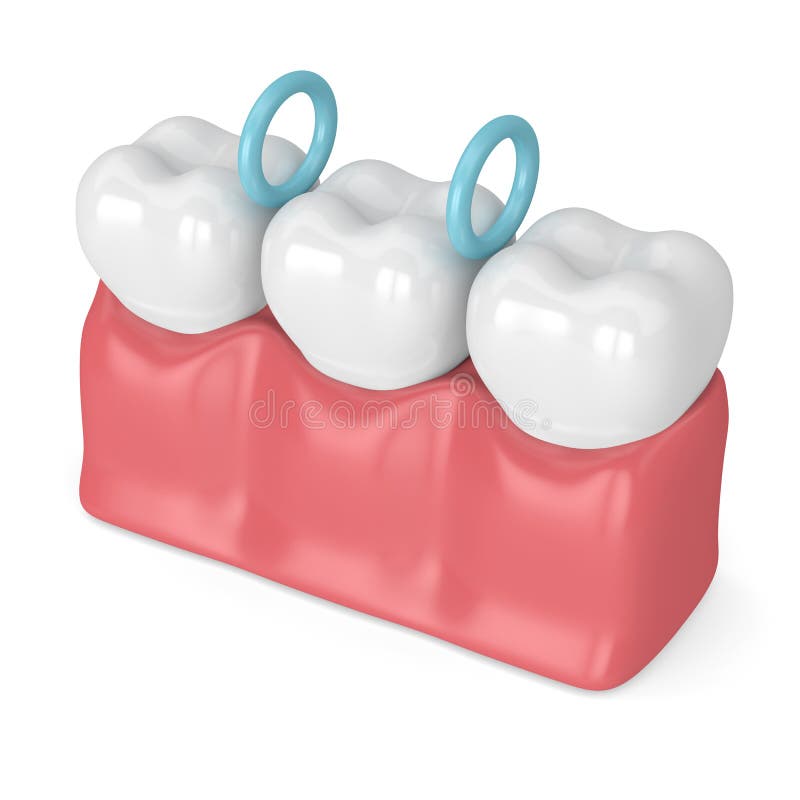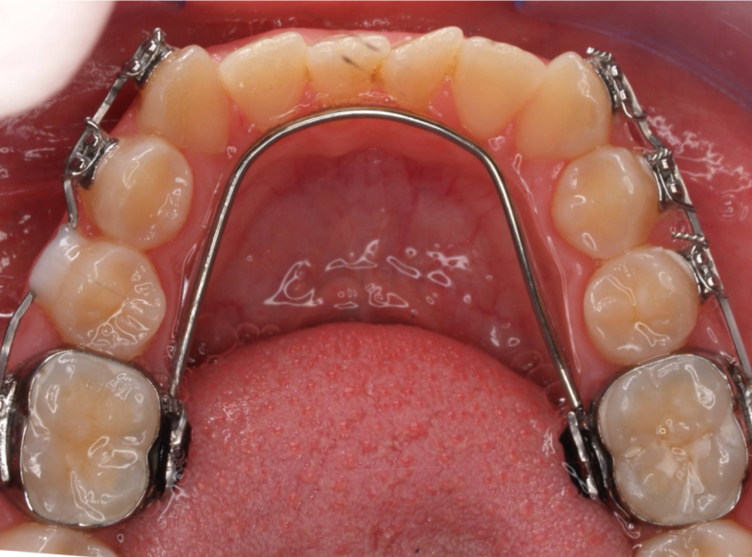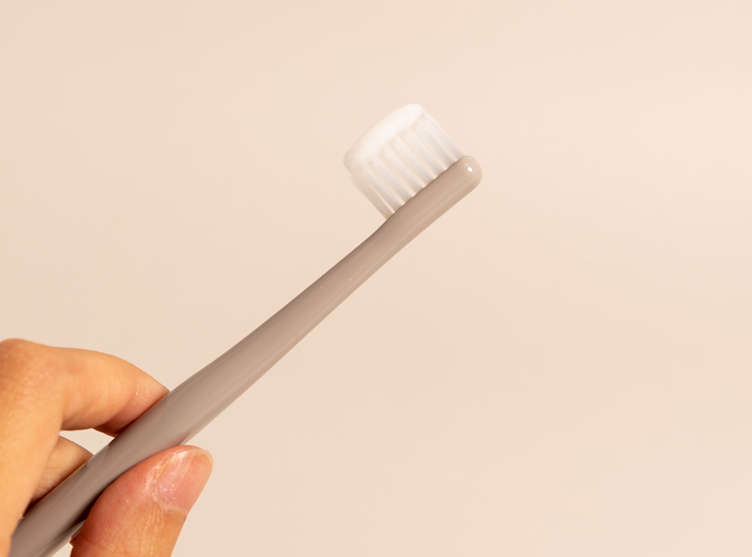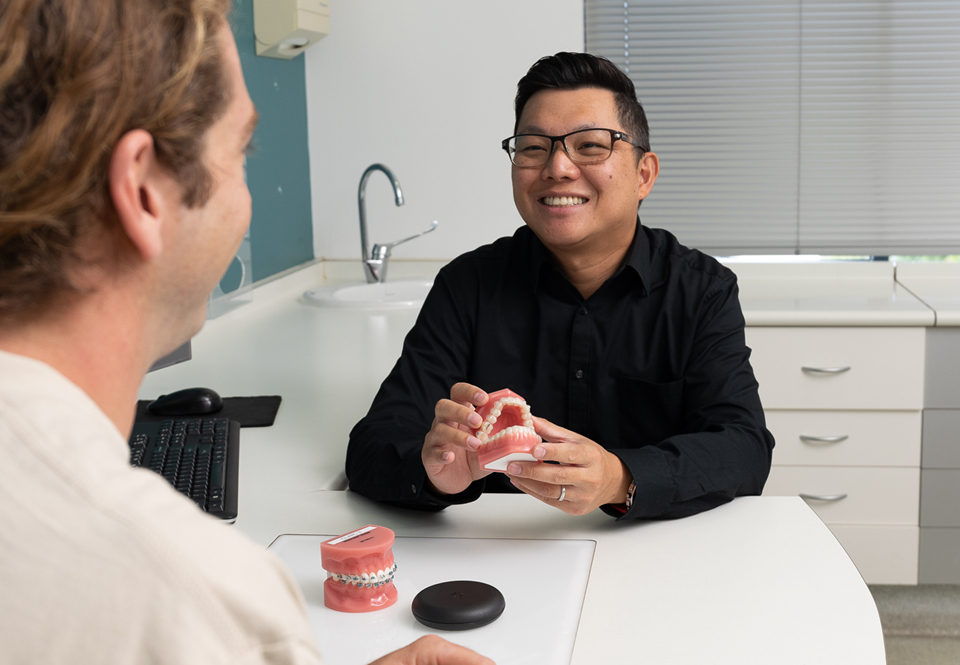
When you’ve considered getting braces, did you also think about orthodontic spacers? Most people are familiar with braces, but not about having orthodontic separators beforehand.
Understanding details like teeth spacers makes it less daunting to grasp the whole process of getting braces. These are usually used in conjunction with braces. Read on to know about orthodontic spacers and why orthodontists require spacers for teeth.

What are Spacers for Braces?
Traditional braces are a common method for straightening teeth. It addresses crooked teeth and properly aligns your bite. Before getting your braces, your orthodontist will prepare your teeth for treatment. One way to prepare your teeth for the hardware of braces is with spacers between your teeth.
Spacers for braces are also called orthodontic separators or dental spacers. They measure about a centimetre in diameter and are placed between molars (back teeth) to create enough space for braces to fasten on.
Are spacers needed before braces?
Not everyone needs spacers when having an orthodontic treatment, but it is common for many patients. Most people’s teeth are close to each other, so spacers are important to create space for the metal bands. Your orthodontist may also not use metal bands on your treatment; it just depends on your case. Also, teeth may already have enough space and spacers won’t be necessary.
Traditional braces are made up of brackets that are cemented to the teeth and connected through wires. These wires are attached to metal bands that look like rings. Orthodontic spacers create space between teeth (usually back teeth) to install metal bands around those teeth for the tooth movement to a desired position.
Types of Spacers
Braces’ spacers can be made of different materials — rubber, metal or elastomeric. The option of usage depends on your condition.
Rubber Spacers

Rubber spacers are commonly used as spacers for braces. They are made up of elastic material that stretches without breaking. These orthodontic rubber bands create extra space between your molars. Rubber band spacers are usually blue in hue and come in various thicknesses, but mostly thin.
Rubber spacers will wear out over time, and they will need to be replaced every two months or so.
Metal Spacers
Metal spacers present an alternative to their rubber counterparts. These spacers are designed to withstand higher pressure and are typically used in more severe cases where substantial space needs to be created.
Metal spacers look like small rings placed between two back teeth. They come in various shapes and sizes, and your orthodontist will choose one that will fit the needs of the patient’s mouth.
Metal spacers for teeth are ideal for those patients who need spacers for more than six weeks. Though it will become loose after one or two weeks, it doesn’t fall off, unlike rubber bands. It tends to be more convenient for patients as they can go for a long period without getting back to their orthodontists.

Elastomeric Spacers
Elastomeric spacers are radiopaque and made of elastomeric material. It makes teeth separate rapidly with high resistance to tearing. It has a flat top and rounded corners, making it easy.
How to insert spacers?
Getting orthodontic spacers will be a week before getting braces.
To insert spacers, your orthodontist stretches the teeth spacers using dental floss or a small tool. They will have to make you open your mouth wide and wiggle the dental spacers into place between your molars. You will feel a pinching sensation and pressure as the spacers installed reach your gumline.
Spacers are typically placed in the back teeth and called molar bands, as they are part of the mouth that tend to be very close together.
How are spacers removed?
Your orthodontist removes your teeth spacers with a fairly simple process that wouldn’t take long. They will pop your teeth spacers out of place with a small tool. When spacers already made space between your teeth, they will come out easily.
How to take care of braces spacers?

When you need spacers for braces, you will only have them for a short time. But while you are wearing them, you need to take care of them.
To care for spacers, you still need to practice good oral hygiene — brushing and flossing — but with the most care.
Rinse your mouth first with water. Then, gently brush your teeth with extra care in the back teeth. Rinse again. You can floss, but not on the areas with spacers to avoid dislodging one.
What to eat and avoid with spacers?
Foods you can eat with spacers:
- boneless meat
- veggies (steamed and diced)
- mashed potatoes
- soup
- oatmeal
- smoothies and protein shakes
- yoghurt
It is a good idea to avoid foods that are not good for the braces while still wearing a tooth spacer. It will be a good practice when you have braces. It would be best if you steered clear of the following:
- Sticky foods like candies, chewing gum, and foods that require much chewing. Their food particles can be stuck in your spacers, and it can be painful to chew them.
- Hard foods that require strength to bite down, like nuts, hard fruits, and corn on a cob.
- Foods with high sugar and starch as it accumulate plaque around spacers and braces, increasing decay.
- Chewing ice
How long do you have spacers for braces?
Orthodontic spacers stay between your teeth for about one to two weeks. However, it may take longer until they are farther apart so that your orthodontist can fit the molar bands between them.
Do spacers hurt as much as braces?
Pain tolerance differs from person to person. Some may say spaces are very painful, while it is irritating for others.
But pain is a common complaint among people wearing braces and those who wear teeth spacers before braces. However, it gets better over time. A study of 62 adolescents was conducted to determine the intensity of pain due to dental spacers. It reported that the worst pain after inserting spacers was about two days. You will feel pressure as your teeth nestled against each other. You will only feel like something is caught between your back teeth as time passes.
To relieve pain, your orthodontist will advise you to take an over-the-counter pain reliever to dull the pain. You may also rinse it with warm water with salt three to four times daily to relieve discomfort.
What happens if spacers fall out?
Having space maintainers or orthodontic separators will not be long. If it goes according to its purpose, you’ll only have them for a week or two before having your metal bands around your back teeth.
Spacers might fall out before your next appointment. When this happens, tell your orthodontist immediately. Your orthodontist may need to install a new set, or they will determine if you have enough space between your teeth.
Conclusion

Spacers for braces play an essential role in the success of your orthodontic journey. They create room for your molars and ensure that braces are fitted correctly. It is crucial to follow your orthodontist’s guidance when it comes to wearing and taking care of spacers, as it will ultimately lead to a successful orthodontic treatment.
Remember to avoid sticky and hard foods while wearing spacers and practice good oral hygiene regularly. With the right care, your teeth will be ready for proper braces placement in no time! So trust your orthodontist’s advice and enjoy a healthy, beautiful smile.
